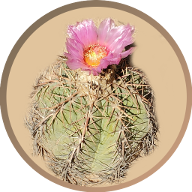- Golden Flowered Century Plant (Agave chrysantha)
- Tonto Basin Agave (Agave delmateri)
- Desert Agave (Agave deserti)
- Hohokam Agave (Agave murpheyi)
- Parry’s Agave (Agave parryi)
- Small Flower Agave (Agave parviflora)
- Toumey’s Century Plant (Agave toumeyana)
- Page Springs Agave (Agave yavapaiensis)
- Banana Yucca (Yucca baccata)
- Joshua Tree (Yucca brevifolia)
- Soap Tree Yucca (Yucca elata)
- Mountain Yucca (Yucca madrensis)
Golden Flowered Century Plant (Agave Chrysantha)
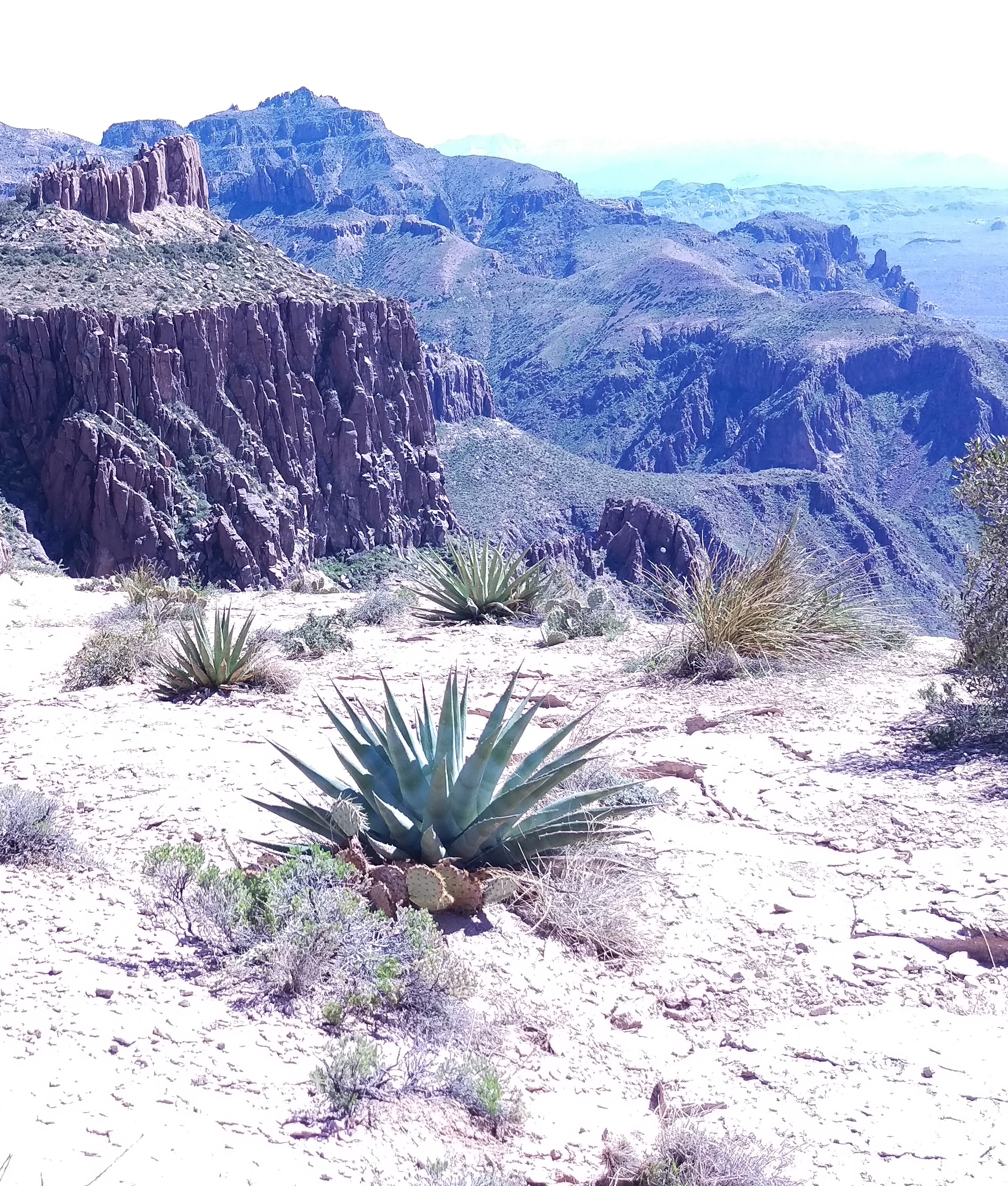 This agave is pictured atop the flatiron in Lost Dutchman State Park. This classic Arizona agave grows to a medium size. Like all Agave’s the beautiful golden flowers can only be seen once, on a giant flowering stock, just before the plant dies.
This agave is pictured atop the flatiron in Lost Dutchman State Park. This classic Arizona agave grows to a medium size. Like all Agave’s the beautiful golden flowers can only be seen once, on a giant flowering stock, just before the plant dies.
Tonto Basin Agave (Agave delmateri)
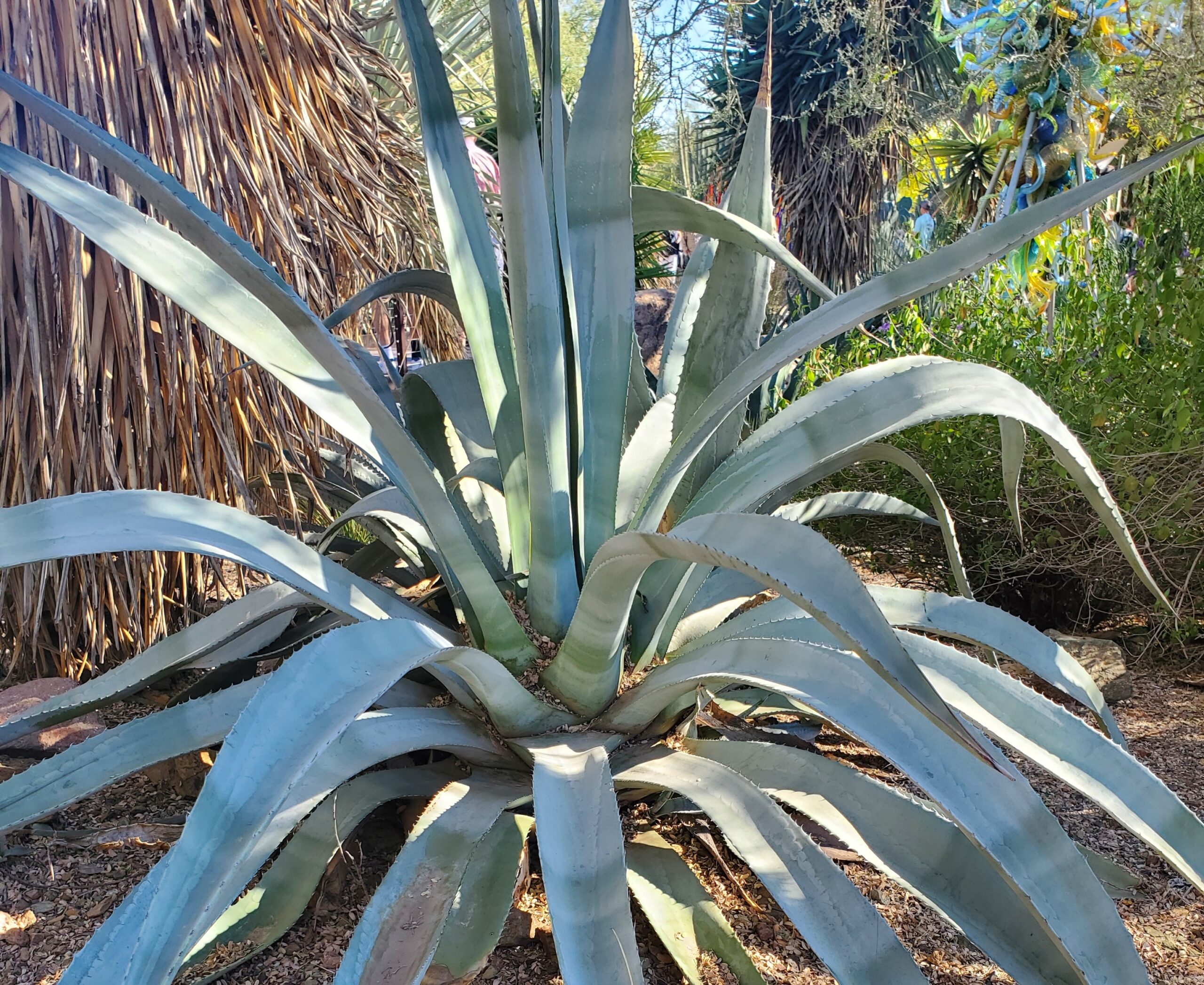 This is one of the ancient cultivars of Arizona. It is listed as an imperilled species. This photo was taken at the Desert Botanical Gardens.
This is one of the ancient cultivars of Arizona. It is listed as an imperilled species. This photo was taken at the Desert Botanical Gardens.
Desert Agave (Agave deserti)
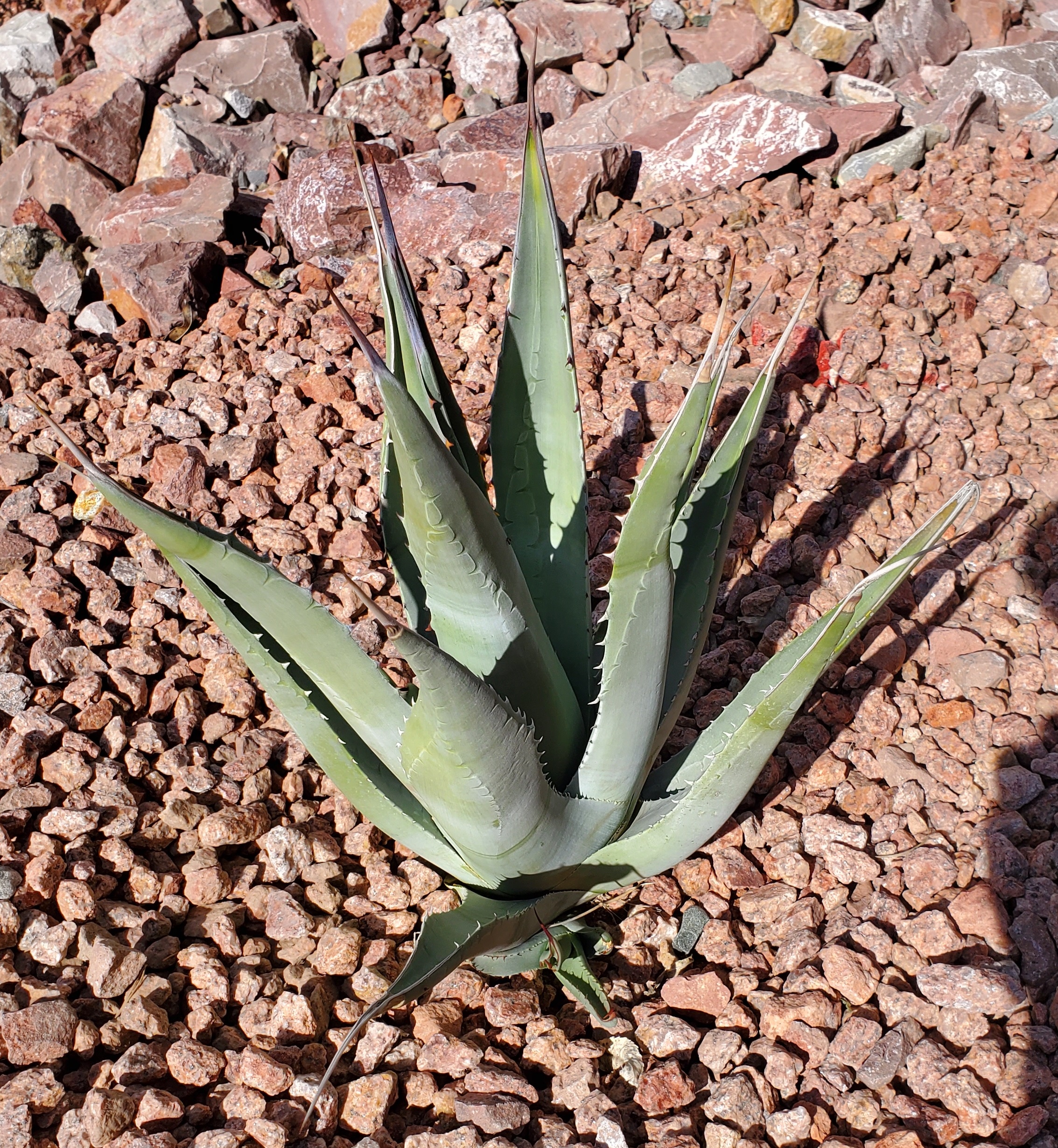 All agaves are arid land plants but the desert agave is the most drought tolerant and sun loving. It typically grows in the low deserts of western Arizona. It has thicker leaves than most agaves and it grows slowly.
All agaves are arid land plants but the desert agave is the most drought tolerant and sun loving. It typically grows in the low deserts of western Arizona. It has thicker leaves than most agaves and it grows slowly.
Hohokam Agave (Agave murpheyi)
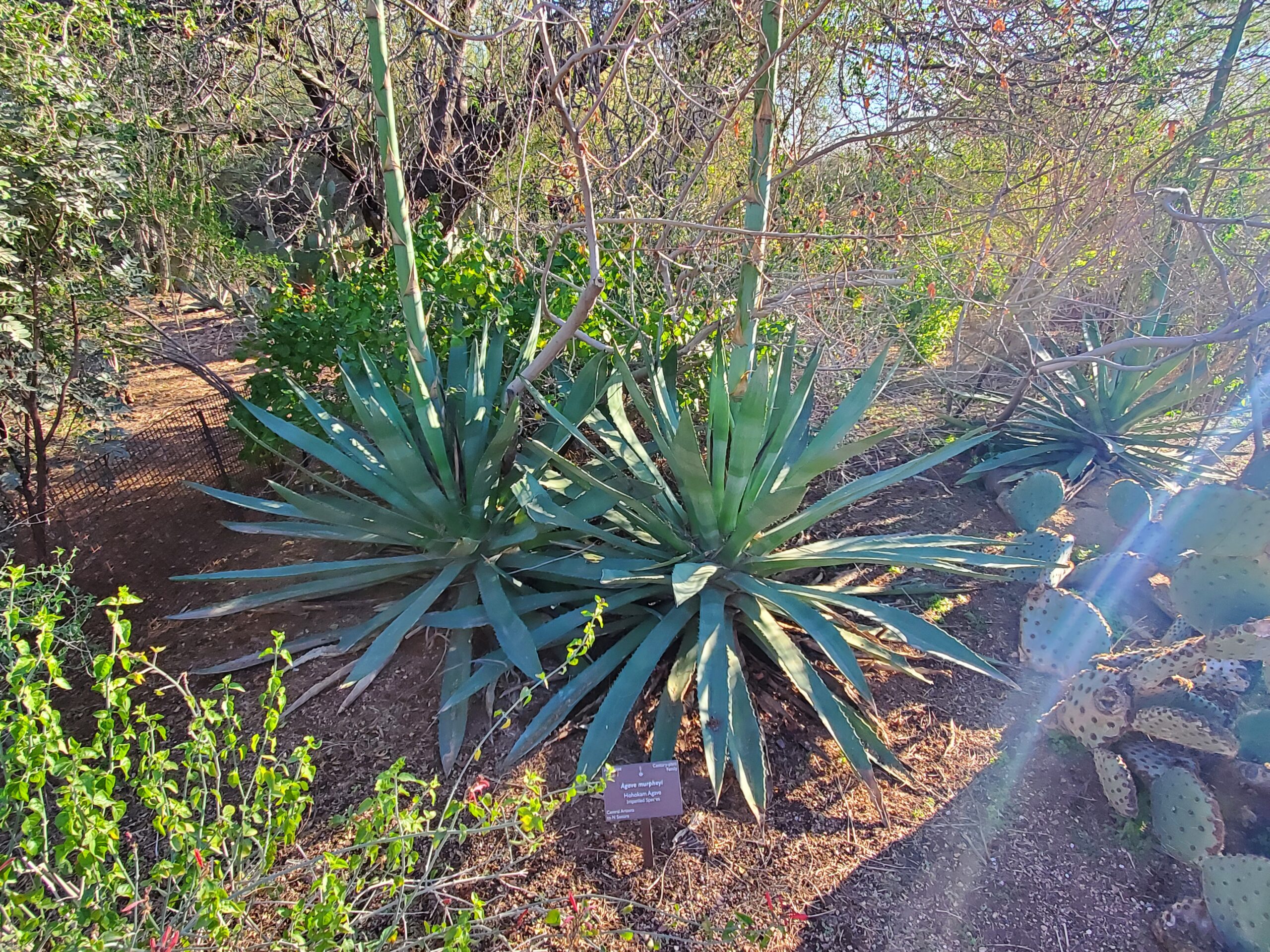 This agave was a cultivar of the Hohokam people of Arizona (300-1500AD). They are mostly found in Arizona around Hohokam archeological sites. They were cultivated for their edible basal rossette that is harvested just before the agave can bloom. It is a medium sized agave that produces many offsets.
This agave was a cultivar of the Hohokam people of Arizona (300-1500AD). They are mostly found in Arizona around Hohokam archeological sites. They were cultivated for their edible basal rossette that is harvested just before the agave can bloom. It is a medium sized agave that produces many offsets.
Parry’s Agave (Agave parryi)
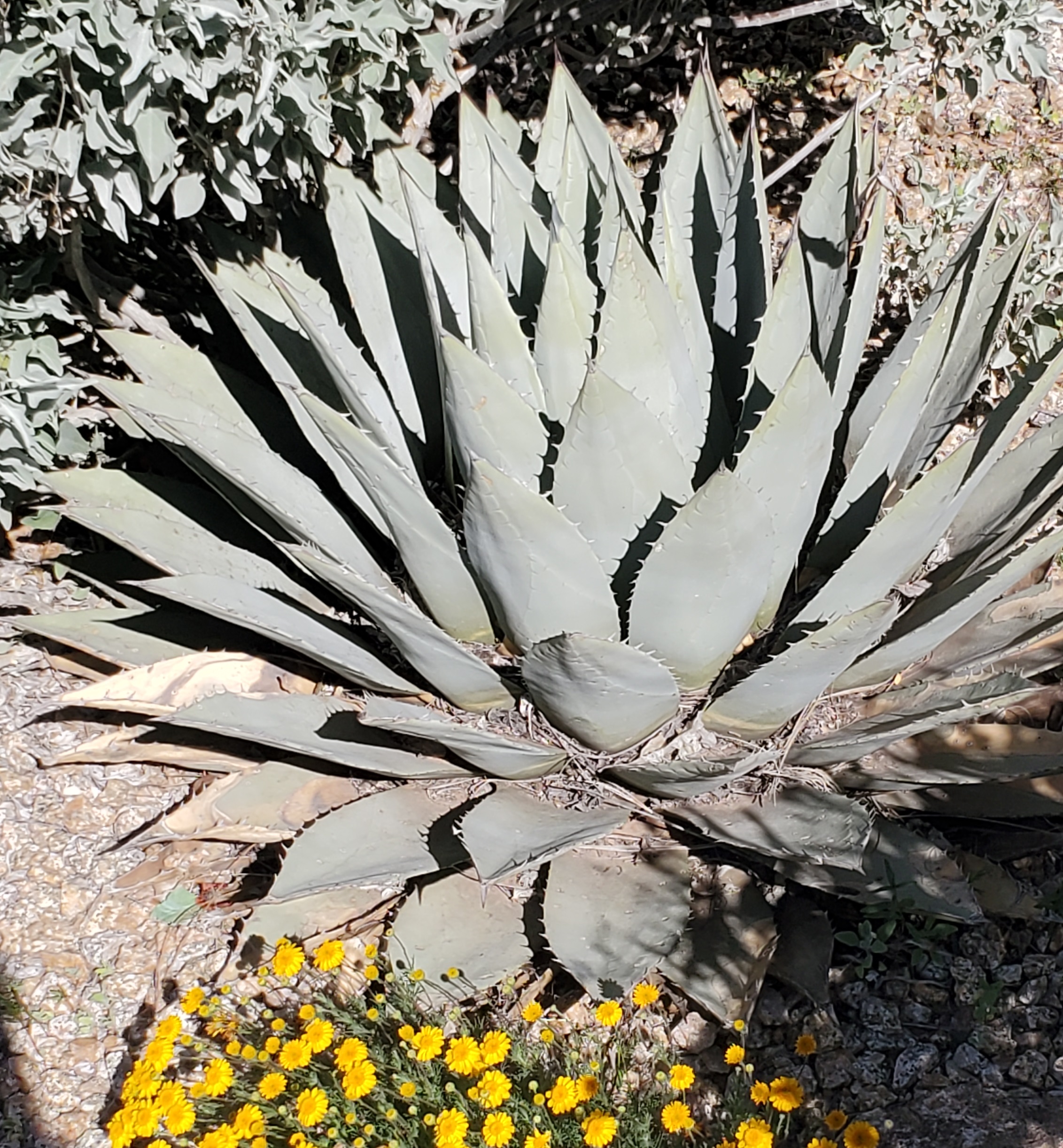 This agave is one of the more common native species of Arizona. It is one of the most common in gardens because of its beautiful form like an artichoke.
This agave is one of the more common native species of Arizona. It is one of the most common in gardens because of its beautiful form like an artichoke.
Small Flower Agave (Agave parviflora)
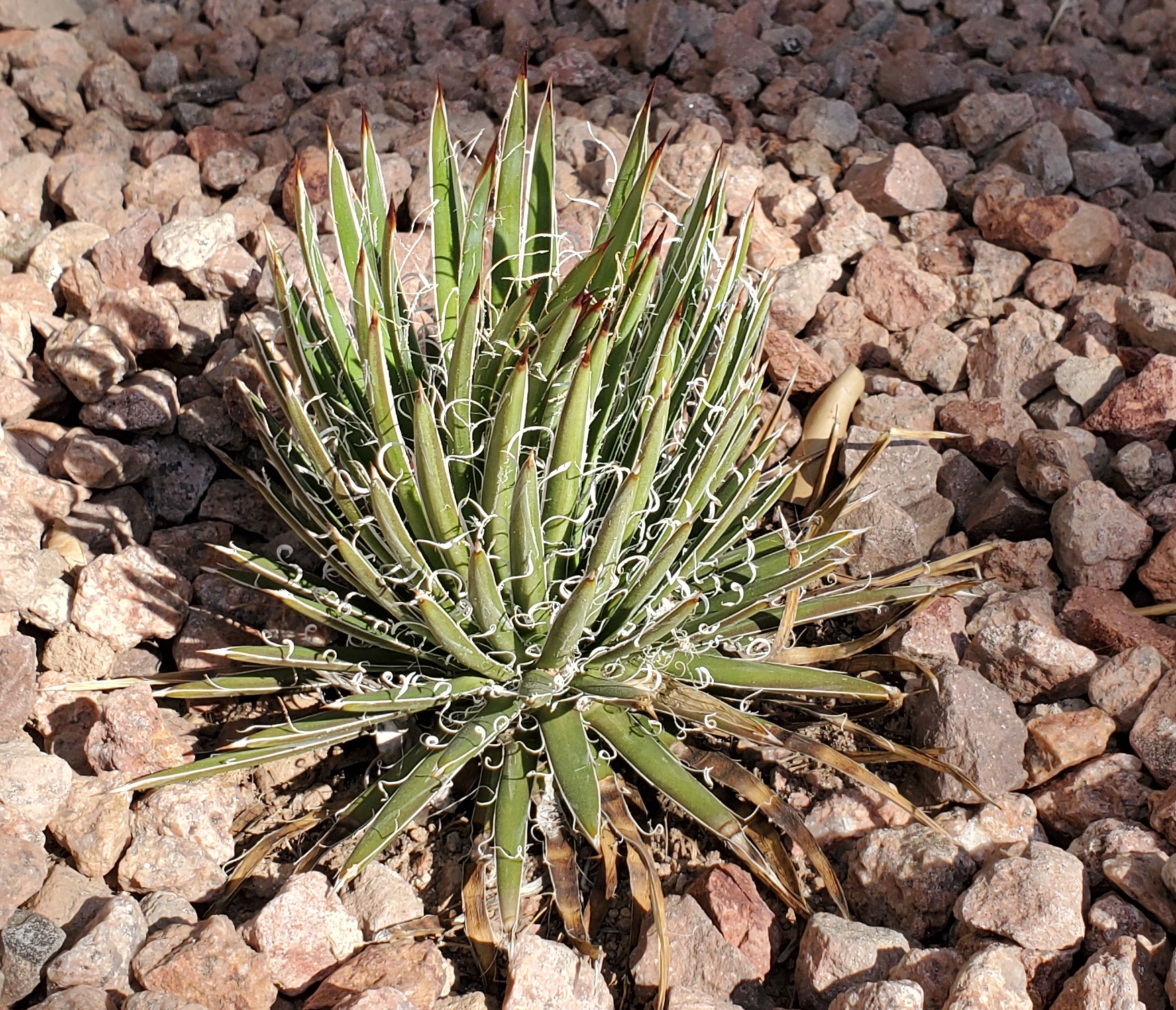 This agave is uncommon in the wild but more common in cultivation. It only grows in a small patch of land in extreme southern Arizona. It is the smallest of all agaves.
This agave is uncommon in the wild but more common in cultivation. It only grows in a small patch of land in extreme southern Arizona. It is the smallest of all agaves.
Toumey’s Century Plant (Agave toumeyana)
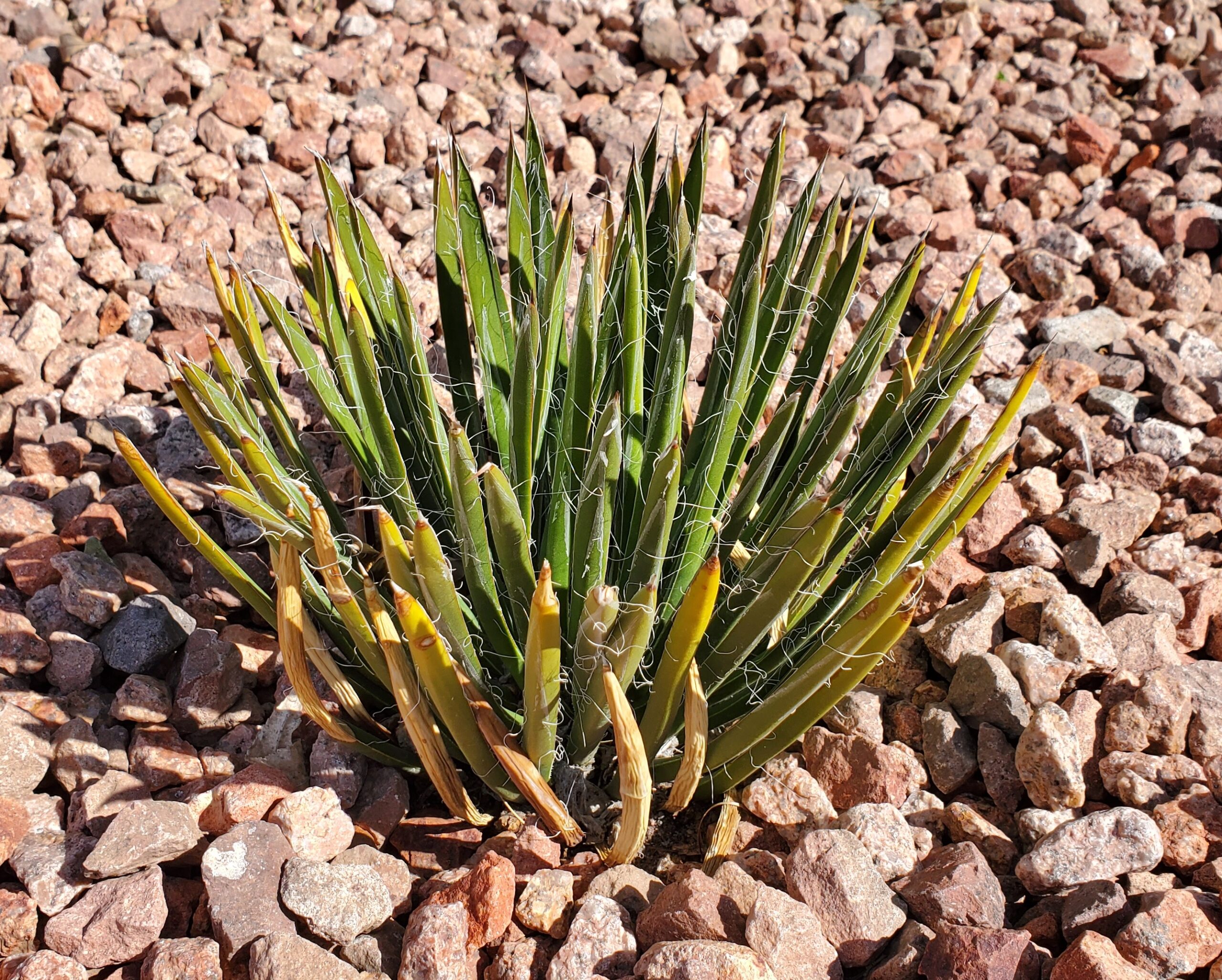 It is easy to see the relationship between yuccas and agaves in this specimen. It has lots of narrow but thick leaves with white stringy margins. It grows in central Arizona. It is shorter than most agaves but it spreads laterally.
It is easy to see the relationship between yuccas and agaves in this specimen. It has lots of narrow but thick leaves with white stringy margins. It grows in central Arizona. It is shorter than most agaves but it spreads laterally.
Page Springs Agave (Agave yavapaiensis)
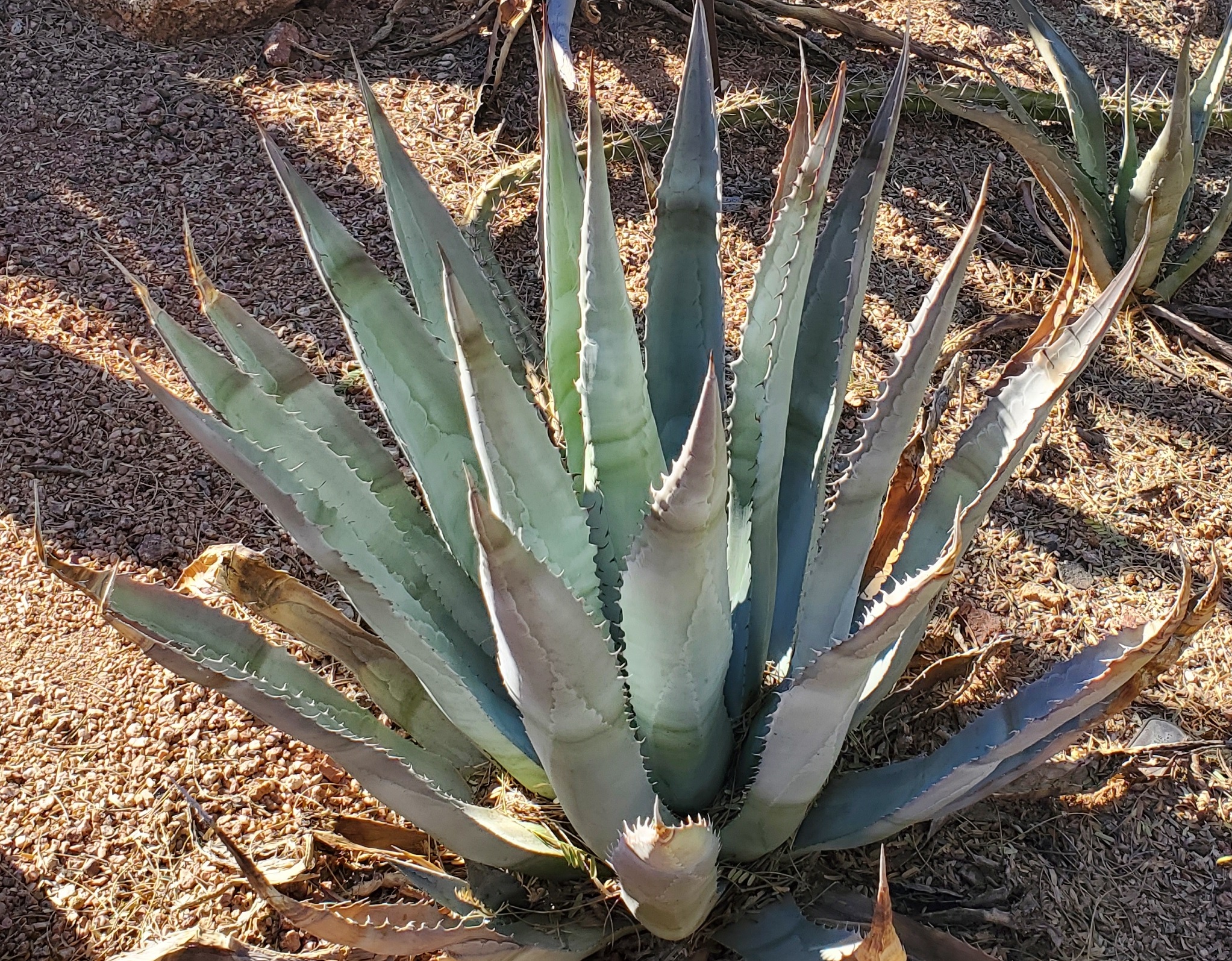 This is another pre-Columbian cultivar of Arizona. It can rarely produce fruit and seeds but primarily multiplies by producing pups. It may be related to the natural species Agave chrysantha and Agave shrevei.
This is another pre-Columbian cultivar of Arizona. It can rarely produce fruit and seeds but primarily multiplies by producing pups. It may be related to the natural species Agave chrysantha and Agave shrevei.
Banana Yucca (Yucca baccata)
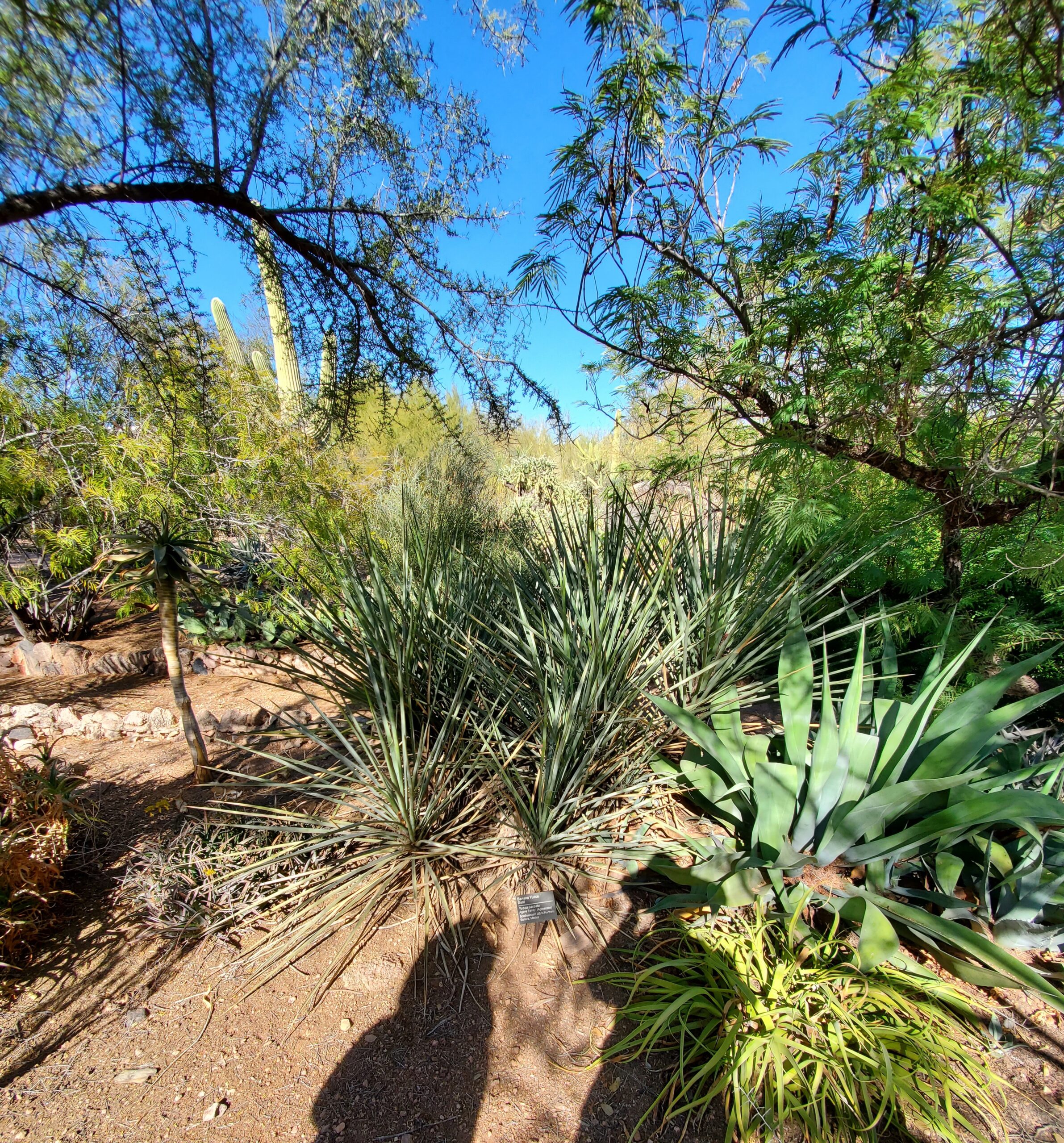 A stiff leaved yucca with a short trunk, it branches and suckers low to the ground. It is usually found in the grassland. The flower stalks are proceeded with fruits that don’t really look much like bananas.
A stiff leaved yucca with a short trunk, it branches and suckers low to the ground. It is usually found in the grassland. The flower stalks are proceeded with fruits that don’t really look much like bananas.
Joshua Tree (Yucca brevifolia)
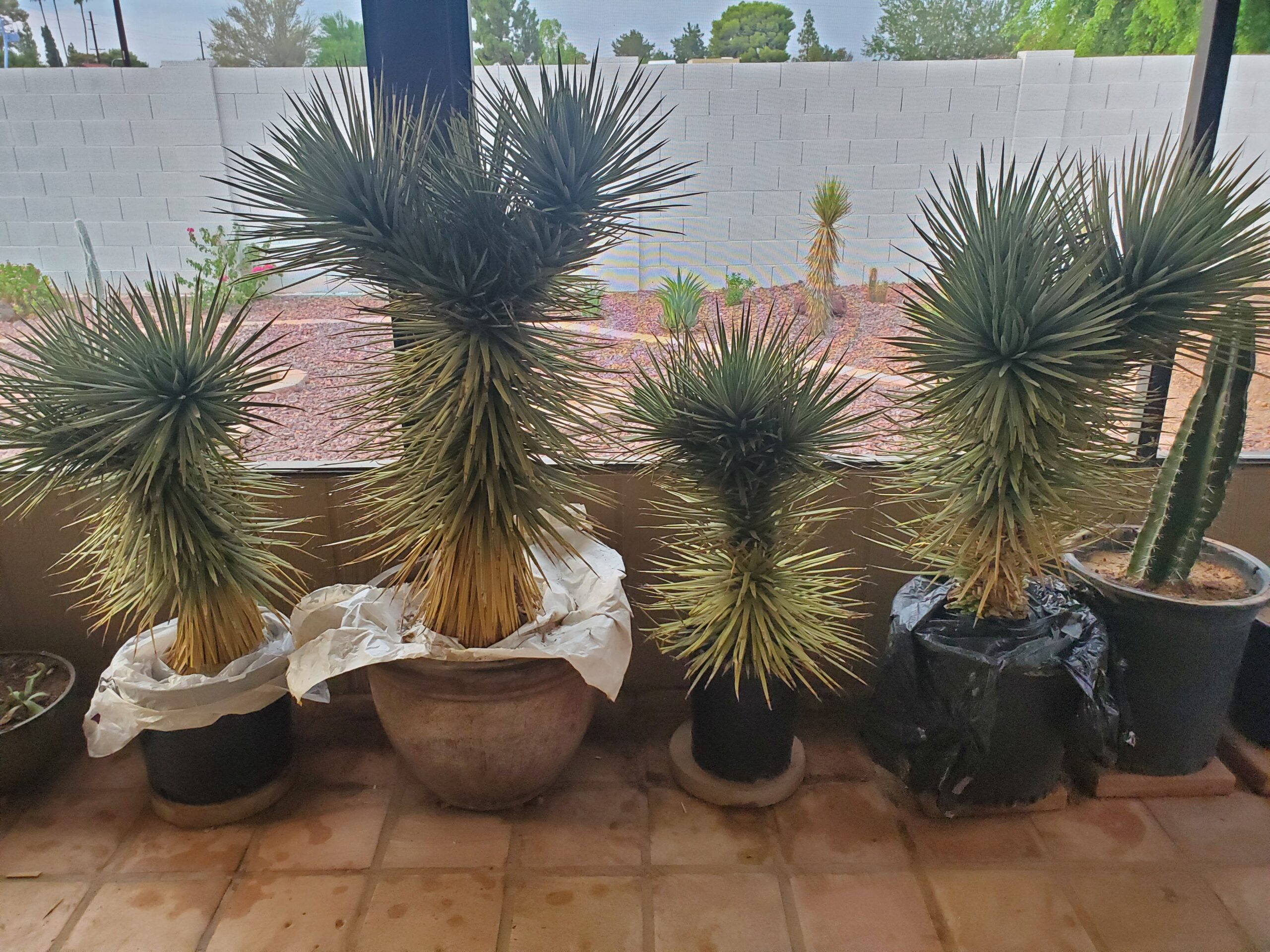 Despite their common name, Joshua Trees are one of my favorite desert plants. Clearly the early European settlers had religion on the mind. They are widely available but very expensive because they are slow growing. They do not transplant well. I bought a three foot tall Joshua tree and planted it in my yard in March. I followed all the directions and was very careful with it, but it died anyway. I have tried to grow seeds several times but I have never got them to germinate. I am still trying…
Despite their common name, Joshua Trees are one of my favorite desert plants. Clearly the early European settlers had religion on the mind. They are widely available but very expensive because they are slow growing. They do not transplant well. I bought a three foot tall Joshua tree and planted it in my yard in March. I followed all the directions and was very careful with it, but it died anyway. I have tried to grow seeds several times but I have never got them to germinate. I am still trying…
Soap Tree Yucca (Yucca elata)
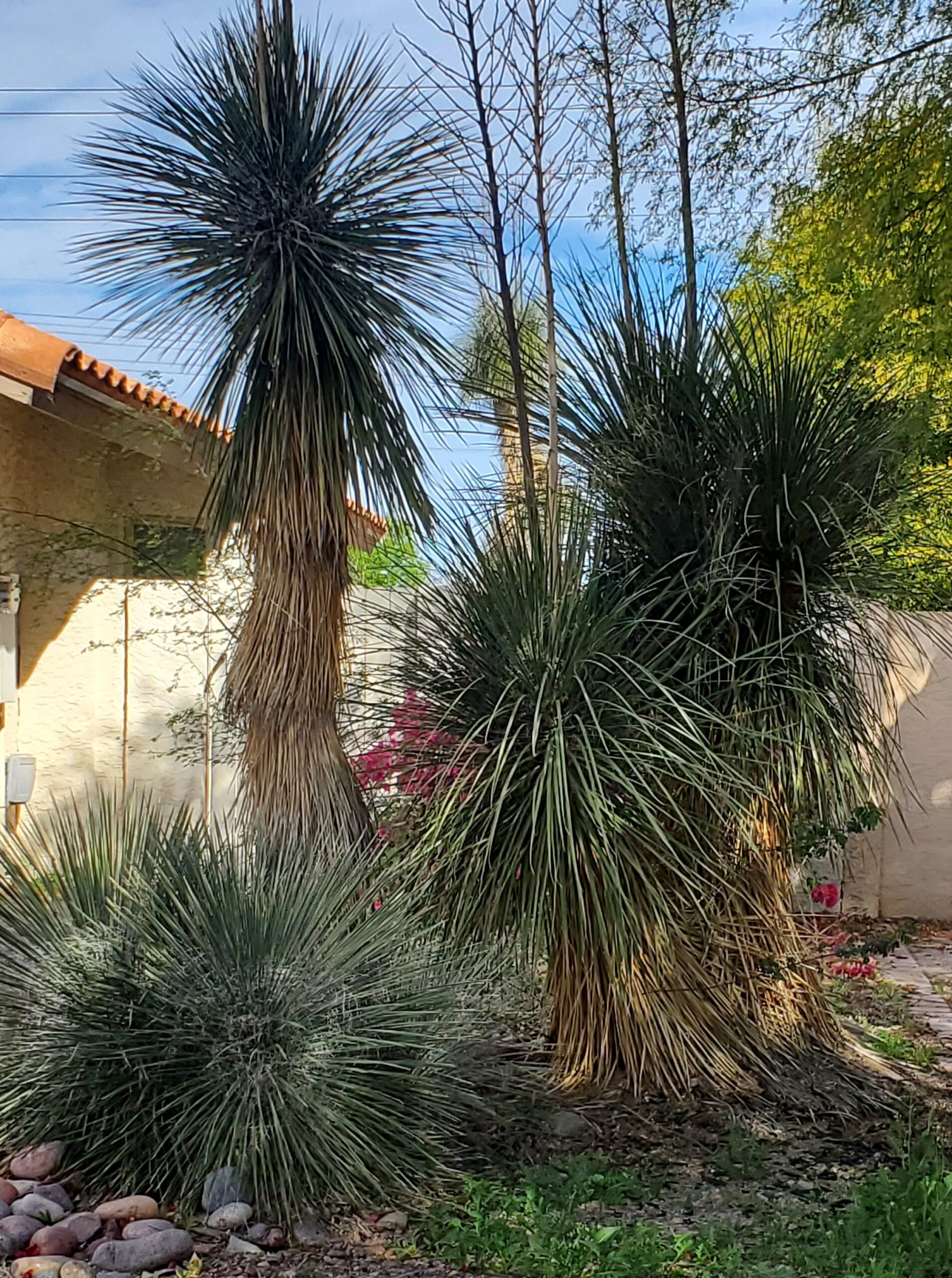 Soap tree yuccas are desert hardy and grow to surprising heights. They are definitely my preferred alternative to palm trees. You never have to trim a soap tree yucca; the old leaves are necessary to protect the trunk. Their beautiful flowers are held up high on a stalk and are pollinated by yucca moths.
Soap tree yuccas are desert hardy and grow to surprising heights. They are definitely my preferred alternative to palm trees. You never have to trim a soap tree yucca; the old leaves are necessary to protect the trunk. Their beautiful flowers are held up high on a stalk and are pollinated by yucca moths.
Mountain Yucca (Yucca madrensis)
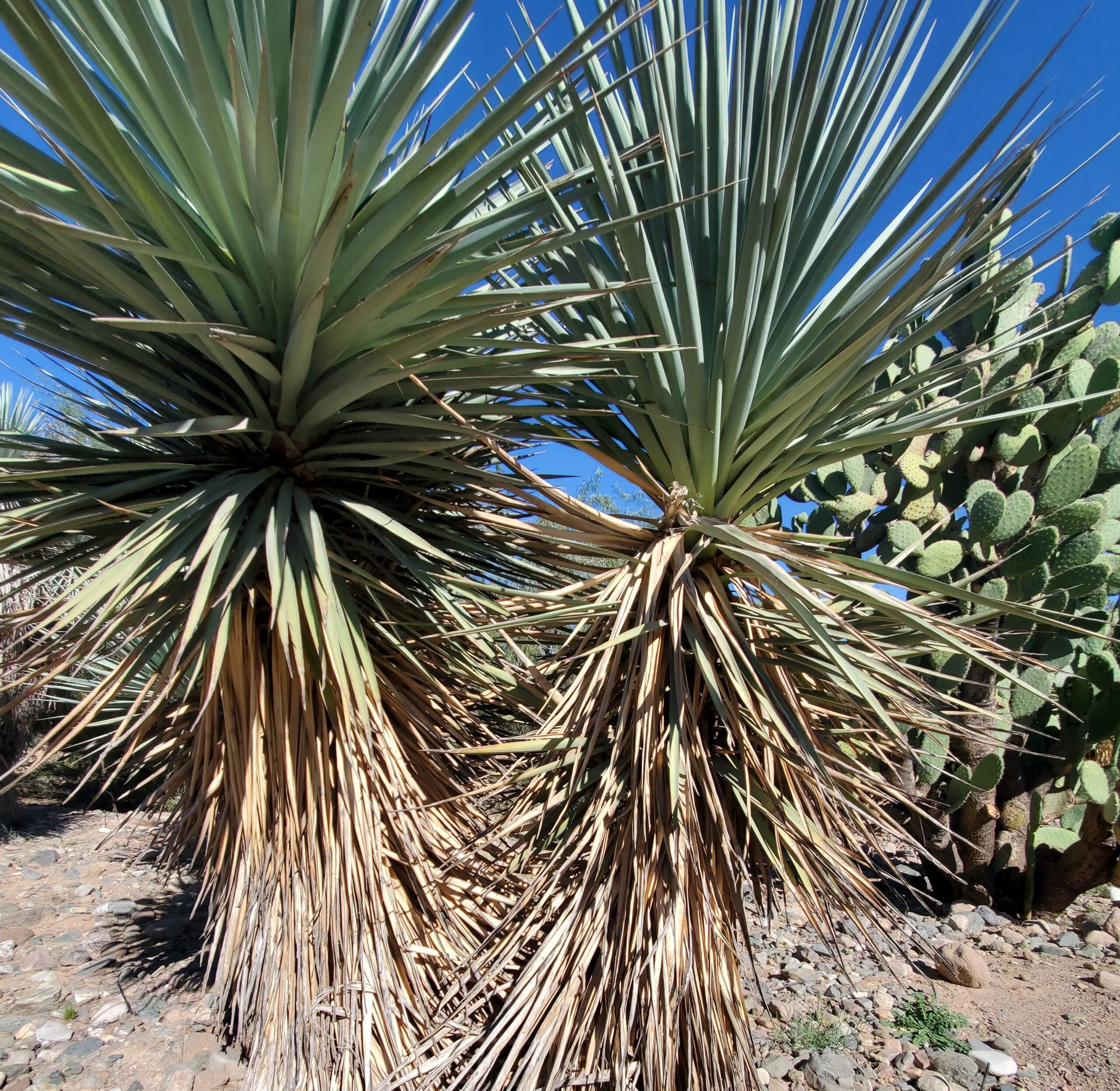 This yucca is a rare find in south eastern Arizona. Although, it is fairly common in gardens because of its beautiful form. The name “Mountain Yucca” indicates that it is typically found at higher altitudes, so it may need more care to survive in the low desert.
This yucca is a rare find in south eastern Arizona. Although, it is fairly common in gardens because of its beautiful form. The name “Mountain Yucca” indicates that it is typically found at higher altitudes, so it may need more care to survive in the low desert.
